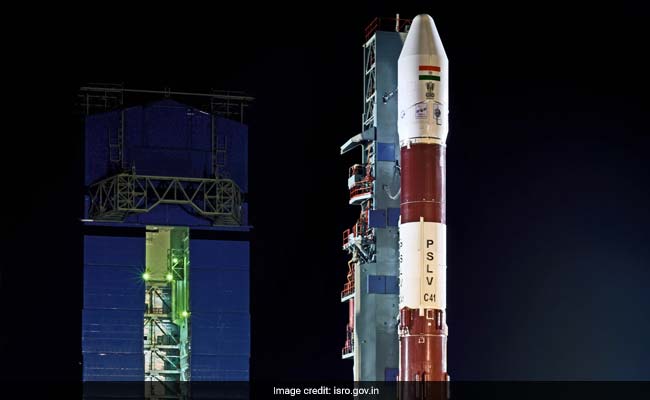
Space agency ISRO is all set for the pre-dawn launch of its next satellite the IRNSS-1I, a key part of the country's constellation of navigation satellites. Exactly at 4.04 am, the Polar Satellite Launch Vehicle or PSLV will lift off from Sriharikota in Andhra Pradesh, carrying the satellite. The 32-hour countdown is progressing successfully. The IRNSS - 1I is the ninth satellite in the NavIC constellation. The last launch of a navigation satellite using the PSLV on August 31 last year, had failed. More recently, a communications satellite, GSAT 6A, launched on April 1, remains lost in space.
Here are 10 facts on the planned satellite launch:
India needs seven operational satellites for providing fail safe satellite based navigation signals. The 1425-kg satellite was made by the Bengaluru-based Alpha Design Technologies, in collaboration with ISRO.
The earlier satellite IRNSS 1A faced hiccups when the atomic clocks on-board the satellite packed up one after another. Last year, on August 31, ISRO launched a replacement satellite -- IRNSS 1H. This time, the rocket failed and the satellite was never injected into the orbit. This forced the space agency to launch the IRNSS 1I as an in-orbit stand-by.
The Indian Regional Navigation Satellite System (IRNSS) has the operational name of NavIC. The word is an acronym for "Navigation with Indian Constellation". Taken together, the system is the country's homegrown Global Positioning System or GPS.
The NavIC system provides accuracy of less than 20 meters in an envelope of 1500 km around the country's borders - a zone where the maximum threat perception lies. The satellite will have both civilian and military uses.
The need for a home-grown GPS was felt soon after the Kargil conflict, when India desperately needed the services of a satellite-based navigation system, but did not have one of its own. The American system was not available at the time.
Only the US and Russia currently have fully operational GPS systems. China and Europe are still in the process of deploying their full systems. A satellite-based navigation system under one's control and command is considered a deep strategic asset.
The launch of IRNSS 1H failed last year as the satellite was never released from the heat shield. Sources in ISRO have hinted that a "power systems failure" led to the GSAT6 A satellite going AWOL. The satellite had cost the country Rs 270 crore.
A top satellite expert from ISRO confirmed to NDTV that the GSAT 6A was a heavyweight communications satellite and the relatively lightweight IRNSS 1 used a "very different power system", which gives the space agency confidence to march ahead with the launch.
The ISRO has received stinging criticism by the national auditor Comptroller and Auditor General for "laxity". In March, the country's top accountant said despite an expenditure of Rs 1,283 crore, the system was way behind schedule, as the ground infrastructure was not ready.
Scientists at ISRO have said the necessary chips that can match the NavIC system are now being made in large numbers by the private sector.

